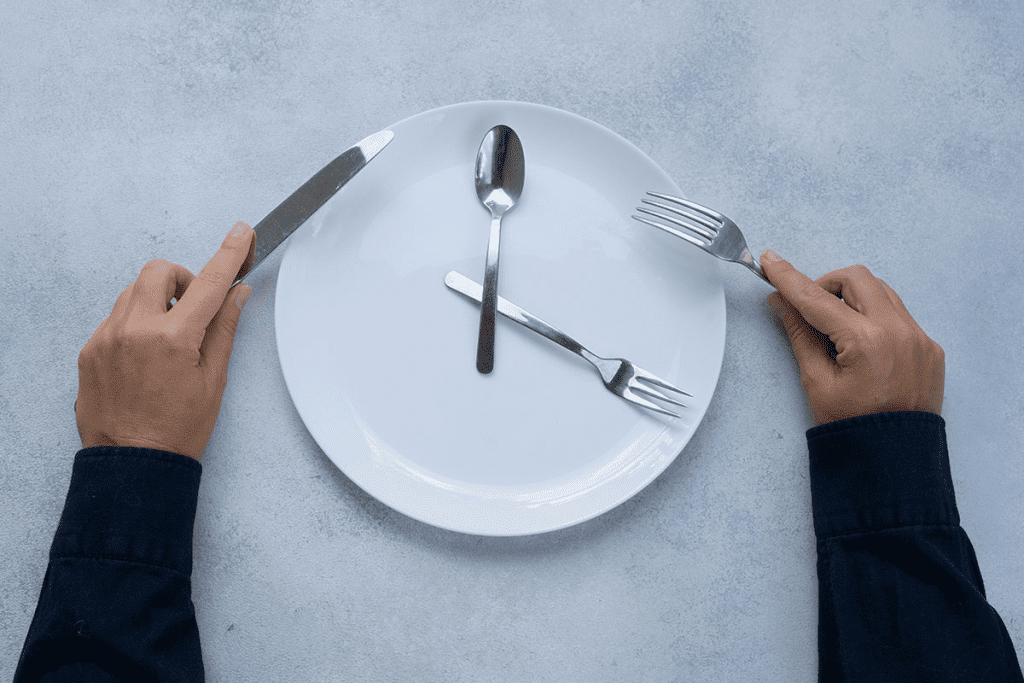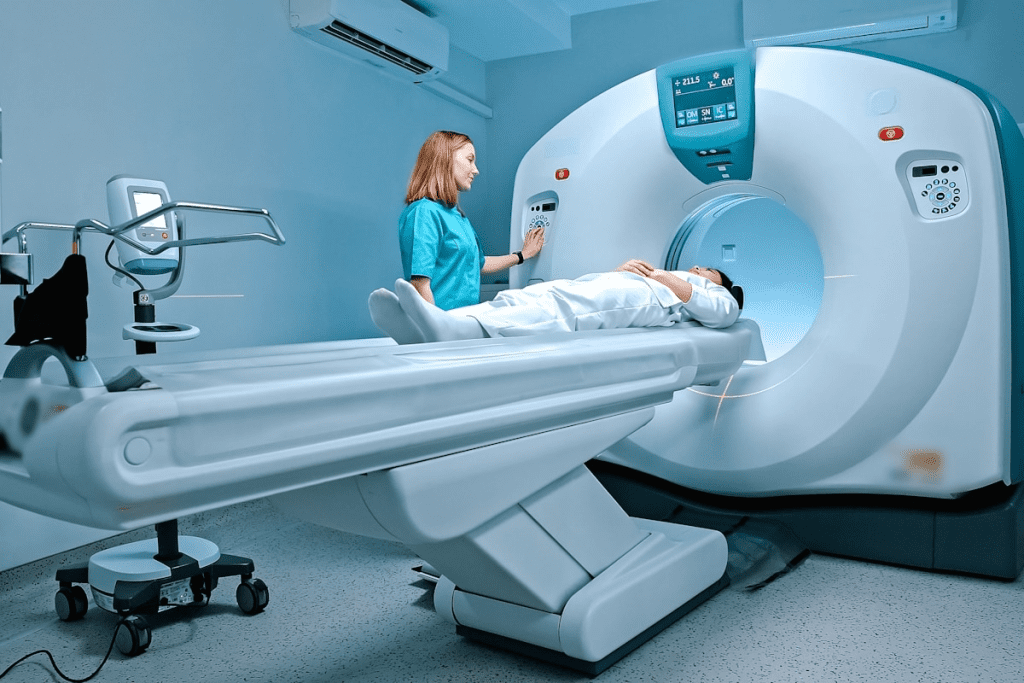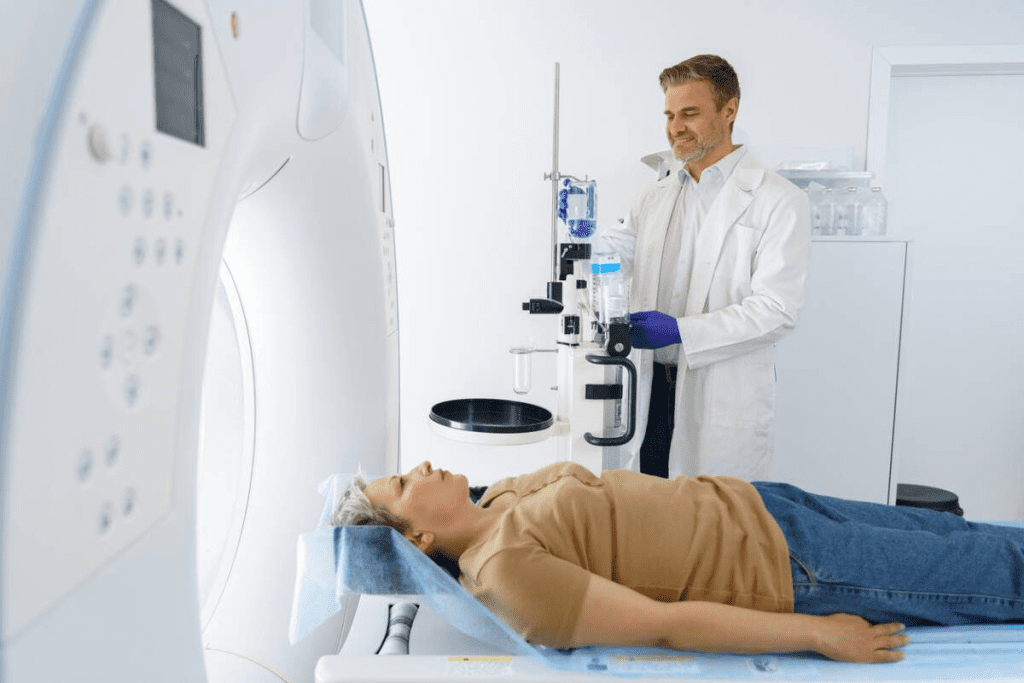Last Updated on November 25, 2025 by
Patients often ask if they need to fast before a CT urogram. New studies have changed how we prepare for this test. At Liv Hospital, we use the latest research to care for our patients.
A CT urogram checks the urinary system, like the kidneys and bladder. It uses non-ionic, low-osmolar contrast media injected into a vein. Drinking water and holding urine helps fill the bladder for better views.

Recent studies show fasting is not needed for a CT urogram with this type of contrast. In fact, fasting might not be helpful. We follow these findings to make our patients’ experience better.
A CT is a detailed medical imaging test. It shows the urinary tract in great detail. X-rays create many images of the kidneys, ureters, and bladder. This test is key to spotting urinary tract problems.

Urography is an imaging of the urinary system. When combined with CT, it offers a detailed look. The main goal of a CT urogram is to find issues like kidney stones, tumors, and structural problems in the urinary tract.
We inject iodine contrast material into a vein. This lets us see how the contrast moves through the system. It highlights any problems.
An older imaging method, the Intravenous Pyelogram (IVP), also uses contrast material. But a CT has big advantages over IVP. IVP mainly looks at how the urinary system works, while a CT shows more.
It gives a detailed view of the anatomy, not just the urinary tract. This makes it a better tool for doctors.
Doctors often use CT to diagnose and track urinary tract issues. They are used for suspected kidney stones, blood in the urine, and tumors. They also help check for damage or abnormalities in the urinary tract.
Knowing about CT helps patients prepare for their test. It also helps them understand the important information it gives to their doctors.
Before a CT scan with contrast, fasting was once a common rule. It aimed to lower the risk of problems like nausea and vomiting. The idea was that fasting could help avoid choking if vomiting happened.
Patients were often told to fast for 4 to 6 hours before a CT with contrast. This rule was based on the type of contrast media and the risk of bad reactions.
The old rules were mainly for ionic contrast media, which were seen as riskier. But with new non-ionic, low-osmolar contrast media, the risks changed a lot.
The main reason for fasting was to lower the chance of choking if someone vomited. It was thought that an empty stomach would reduce the risk of choking if vomiting happened.
Other things to do before a CT urogram with contrast include:
It’s very important to follow the exact instructions from your healthcare provider or the radiology department. These directions are made just for you and the specific needs of the test.
Recent studies have changed our view on fasting before a CT The use of new contrast media, like non-ionic, low-osmolar agents, is key to this research.
Research shows that new contrast media lowers the risk of problems during CT. This has made experts rethink the need for fasting.
Now, we’re moving towards making CT more comfortable for patients. This change doesn’t hurt the quality of the images.
A big study with over 2,000 people looked at fasting before CT urograms. It found no big difference in problems between those who fasted and those who didn’t.
“The study showed that nausea and vomiting were the same in both groups. There were no cases of aspiration pneumonitis.”
No author specified
Looking closer at the data, the type of contrast media was key. It helped keep problems low, whether patients fasted or not.
This research changes how we prepare patients for CT urograms. It suggests fasting might not be as important with today’s contrast media.
Recent updates from top radiology groups have changed CT urogram protocols. These updates are based on new evidence and aim to improve care for patients.
The European Society of Urogenital Radiology (ESUR) has updated its guidelines. Now, fasting is not needed for routine CT exams, including CT urograms. A leading radiology expert says, “This change is based on strong evidence. It shows that certain contrast media can be safely given without fasting.”
The ESUR guidelines focus on patient comfort and keeping exams effective. By removing fasting, patients can find CT urograms easier and less painful.
The American College of Radiology (ACR) has also updated its advice. Now, fasting is not needed for CT urograms with certain contrast media. The ACR guidelines say, “The decision to fast or not should be based on individual patient factors and clinical judgment.”
These updates from ESUR and ACR make protocols more patient-focused. By adopting these changes, healthcare providers can make CT urogram procedures better for patients.

When billing and insurance come up, the CPT code for CT urogram is key. The current CPT code for CT urography is usually 74178 or 74174, depending on the procedure and contrast use. It’s important to check with insurance providers about their coverage for CT urograms.
“Understanding the billing and coding for CT urograms is vital for healthcare providers. It ensures proper reimbursement and follows insurance rules.”-A doctor highlights.
The updated guidelines from ESUR and ACR mark a big shift in radiology. By adopting these changes, healthcare providers can improve patient care and outcomes.
“The move away from routine fasting for CT urograms is a prime example of how radiology is evolving. It prioritizes patient comfort and safety while keeping diagnostic imaging quality high.” –
Expert in Radiology
As radiology keeps evolving, we’ll see more updates and improvements to CT urogram protocols. By keeping up with these changes, healthcare providers can give their best care to patients.
Fasting before a CT urogram is now questioned. It can cause dehydration and other issues. Recent studies show it might not be needed for all patients.
Dehydration is a big worry with fasting. It raises the risk of contrast-induced nephropathy (CIN). CIN is kidney damage from the CT scan contrast media.
Dehydration makes the CIN risk higher. But we know now that kidney health and contrast type matter more. Staying hydrated is key, though.
Fasting affects patient comfort, mainly during bladder CT scans. It makes drinking water hard for those who are weak or dizzy. This can lead to poor scan results.
By avoiding fasting, we can make patients more comfortable. This leads to better scan results and fewer repeats.
Prolonged fasting changes blood sugar and can cause dehydration and electrolyte imbalances. It’s a big problem for people with diabetes.
Adopting patient-focused protocols helps. For example, a light meal before the CT urogram keeps blood sugar stable and comfort levels high.
In summary, fasting before a CT urogram has many risks. These include dehydration, discomfort, and stress. By understanding these risks and changing our approach, we can improve patient care.
At Liv Hospital, we focus on making CT urogram preparation comfortable and safe for our patients. We follow the latest medical evidence to give our patients the best care. This means our patients get both thorough and caring treatment.
We’ve moved away from old fasting rules to a more patient-friendly method. This change helps us offer the latest and most caring care to our patients. It’s all about putting our patients first.
Our CT urogram protocols aim to give clear images without making patients uncomfortable. We think this not only makes the experience better for patients but also helps in making accurate diagnoses. This leads to better treatment plans for everyone.
A CT urogram is a test that looks at the urinary system. It includes the kidneys, ureters, and bladder. It uses contrast material injected into a vein to get detailed images.
To do a CT urogram, contrast material is injected into a vein. This material outlines the urinary system as it moves through. It gives clear pictures of the kidneys, ureters, and bladder.
No, you don’t need to fast before a CT urogram. Recent studies and guidelines say fasting is not needed. This is because the contrast material used is safe and doesn’t require fasting.
Not fasting before a CT urogram has many benefits. It reduces dehydration risk and makes the test less uncomfortable. It’s also better for patients with certain health issues.
Fasting before a CT urogram can cause dehydration. This increases the risk of kidney problems. It also makes the test more uncomfortable and can affect patients with health issues.
While fasting is not needed, you might be asked to drink water. This helps fill the bladder. Your healthcare provider or radiology department will give you specific instructions.
A CT urogram gives more detailed images than a traditional IVP. It can spot a wider range of problems. This makes it a more advanced diagnostic tool.
A CT urogram is often used to find and diagnose urinary tract issues. This includes kidney stones, tumors, and other problems in the kidneys, ureters, and bladder.
Yes, there are specific CPT codes for CT urogram. Insurance coverage can vary. It depends on the provider and your insurance plan.
Yes, a CT urogram is a great tool for finding kidney stones. It’s also good for diagnosing other urinary tract issues.
A CT urogram does include the bladder. But it’s a more detailed test. It looks at the whole urinary system, including the kidneys and ureters.
Ferreira, T. S., Silva, L. B., & Chojniak, R. (2024). Fasting before contrast-enhanced CT and the incidence of acute adverse reactions. Insights into Imaging. https://insightsimaging.springeropen.com/articles/10.1186/s13244-024-01767-9
The Effect of Abolishing Instructions to Fast Prior to Contrast (Ionic/Non-ionic) CT. (2020). Insights into Imaging. https://www.ncbi.nlm.nih.gov/pmc/articles/PMC7584708/
EuroSafe Imaging / Iodine-Based Contrast Media: Facts and Myths. (2018). https://www.eurosafeimaging.org/wp/wp-content/uploads/2017/09/201806_CT-WG_TipsTricks_WPSK_final.pdf
Subscribe to our e-newsletter to stay informed about the latest innovations in the world of health and exclusive offers!